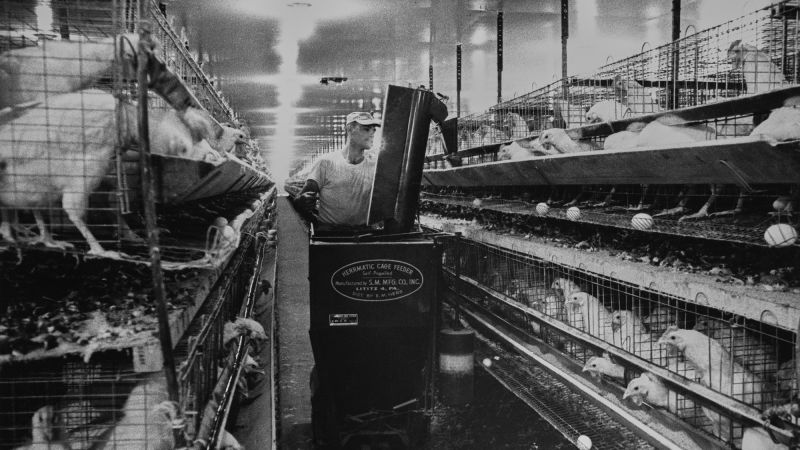The concept of the “chicken tax” might seem misleading at first glance, as it primarily pertains to tariffs on pickup trucks rather than poultry itself. Introduced by President Lyndon Johnson in 1963, this unique tax continues to influence the U.S. automobile market today, highlighting how tariffs can have long-lasting implications on economic structures and consumer behavior.
The chicken tax originated in response to European tariffs imposed on American chicken, effectively sidelining U.S. poultry producers from the expanding European market. In retaliation, Johnson imposed a series of tariffs on various European goods, including trucks. At that time, the American vehicle market was predominantly filled with domestically produced cars, where brands like Ford and General Motors reigned supreme, and few consumers were acquainted with foreign manufacturers like Toyota or Honda.
One of the tax’s more significant effects is its prevention of foreign automakers from selling truck models produced in Europe or Asia within the United States. This limitation grants a competitive edge to American manufacturers, allowing them to thrive economically while creating a paradox for consumers. While U.S. automakers enjoy heightened profits and the domestic workforce gains job stability, American consumers face limited choices and elevated prices for pickup trucks.
Dan Ikenson, an economist with the Cato Institute, emphasizes that while tariffs can be adjusted or revoked, the political and economic incentives they create are often ingrained and difficult to dismantle. He notes that established industries and consumer bases can perpetuate the existence of such taxes, leading to their extended duration. As a result, tariffs can unwittingly shape market dynamics and consumer options, often for generations.
Interestingly, even after the European nations lifted their chicken tariffs in 1964, the chicken tax was not challenged, largely due to the strong influence of American automakers and their unions. The Big Three—General Motors, Ford, and Chrysler—benefited from elevated truck prices attributed to the lack of foreign competition. Over the years, American vehicle prices have increased significantly compared to their imported counterparts, demonstrating the direct effect of the chicken tax.
The resilience of the chicken tax further showcases the ongoing complexities of global trade. Despite international trade agreements advocating for free trade, the chicken tax has remained untouched, illustrating the mantra that once tariffs are established, they tend to endure. Trade attorney Lawrence Friedman indicates that many such tariffs, originally designed for obsolete products, have persisted, maintaining economic structures shaped by prior conditions.
In the face of these trade restrictions, manufacturers often employ “tariff engineering” to circumvent penalties. Such strategies can involve shipping trucks disassembled or altering vehicle specifications to classify them differently. For instance, companies like Ford have faced penalties for manipulating configurations to evade the chicken tax. This highlights a paradoxical facet of trade; manufacturers, both domestic and international, continuously seek creative ways to navigate tariffs rather than engaging in straightforward competition.
The introduction of the North American Free Trade Agreement (NAFTA) in 1994 further transformed the landscape of the automotive industry. The agreement allowed for smoother cross-border trade, leading to production plants emerging in both Canada and Mexico. As a result, foreign automakers began circumventing the chicken tax by producing vehicles close to the American market, effectively changing the dynamics of vehicle sales.
Over decades, foreign automakers, limited by the chicken tax on pickups, shifted their focus toward passenger cars, which became increasingly popular amidst rising gas prices in the 1970s. However, their choice was not driven simply by the chicken tax; rather, the economic incentives to produce vehicles domestically to avoid tariffs played a significant role in shaping the market.
Despite these tariffs and regulations, the share of the Big Three automakers in the U.S. auto market has been dwindling. By 2007, foreign brands began to dominate combined car and truck sales, showcasing a significant market shift. Although U.S. manufacturers still lead in truck sales, they accounted for only 38% of the overall market in recent years.
The ongoing impact of President Trump’s tariffs poses new questions regarding their longevity and effect on the market. The chicken tax serves as a historical reminder of how tariffs can result in unforeseen economic consequences. Even as they lead to increased consumer prices and job losses, the narrative surrounding protectionist policies continues to resonate with many Americans.
In conclusion, the chicken tax is a compelling case study illustrating how trade policies can significantly affect consumer behavior and industrial structure over time. As the economic landscape evolves, it serves as a reminder of the complexities and challenges inherent in trade regulations, with repercussions that can echo through generations.



